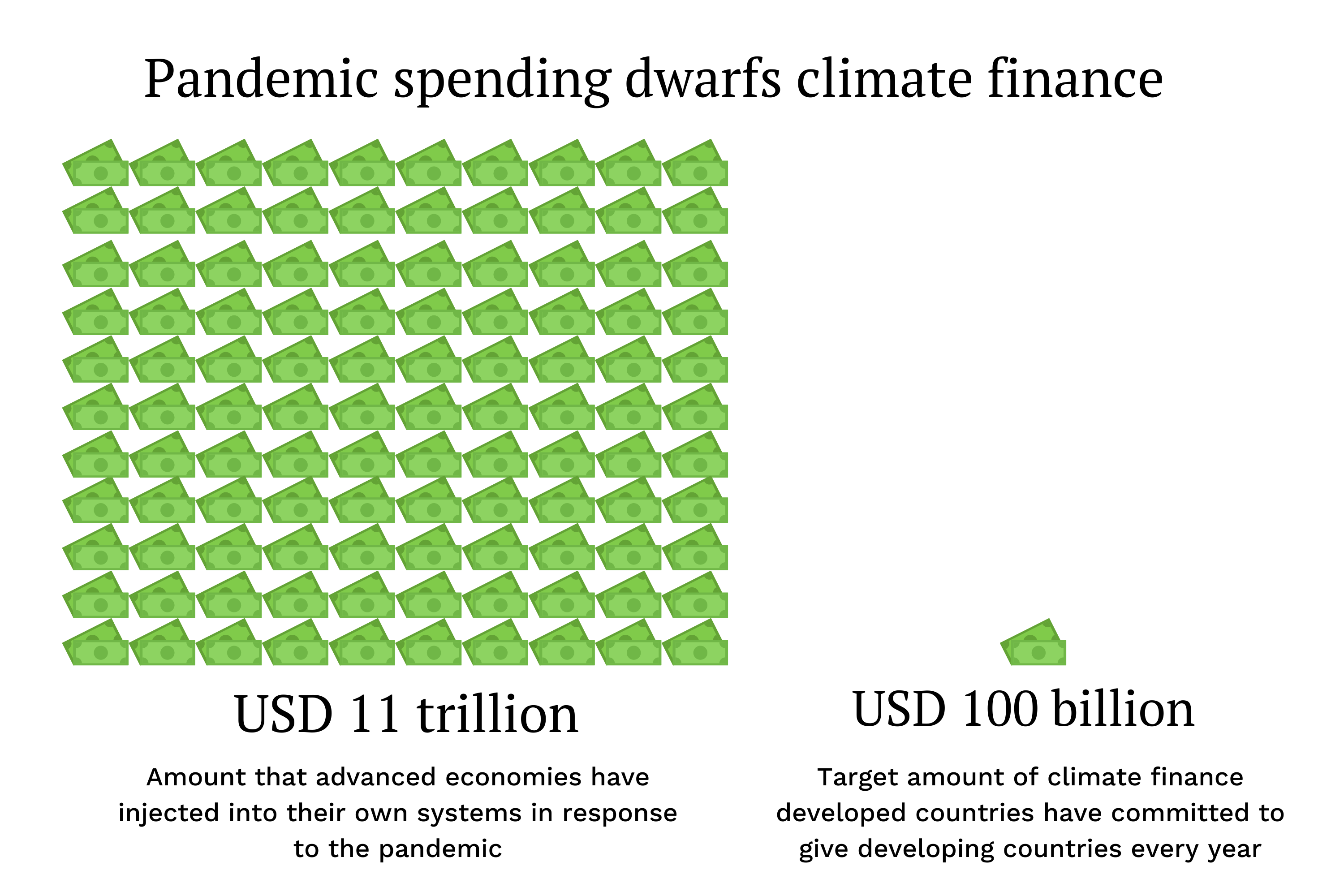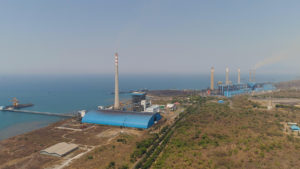The Paris Agreement works on a five-year cycle. Twice a decade, each country is expected to increase its ambition on national climate action through a formal submission, known as the Nationally Determined Contribution (NDC).
For the first time since signing the Paris Agreement in 2015, countries will be formally submitting their revised versions of “increased ambition”. For this reason alone, COP26 – the annual climate talks taking place in Glasgow next month – has taken the global centre stage.
Ambitious action, however, needs money. Finance then naturally becomes a critical discussion block at climate change negotiations. Over the past six years, not only the pandemic, but also a set of economic and political developments have taken place outside the UN negotiations that will influence climate finance discussions at COP26.
A fragile global economy
Back in Paris, there was very little recognition of how fragile our financial system actually is. A global re-evaluation of the planet’s economic “resilience” only happened when we were hit by the pandemic, the most damaging financial crisis since the Great Depression of the 1930s.
We witnessed how debt vulnerability, loss of revenue, contractions in GDP, and loss of foreign investments created monumental fiscal pressures in developing economies, reversing progress achieved over decades. The existing USD 100 billion commitment by rich countries as annual climate finance to developing countries paled in comparison with the USD 11 trillion that advanced economies injected into their own systems in response to the pandemic.

While the same countries talk about seizing the opportunity and suggest a “green recovery”, their own immediate interventions are far from green. In fact, the stimulus to date is set to have a net negative environmental impact in 16 of the G20 countries and economies.
The way forward
Nonetheless, since Paris a couple of good things have happened. These can potentially help to reduce the cost of ambitious actions.
First, a fundamental shift in technology has led to greater support for renewables across the entire energy sector. For example, under the right conditions, solar has become the cheapest electricity ever produced according to the International Energy Agency in its 2020 World Energy Outlook report. As a result, low-emission development pathways are now not as unachievable as they seemed five years ago.
However, access to clean energy has to be democratised. If developing economies are not able to access cheaper forms of energy on an immediate basis, developed countries’ ambitions to achieve carbon neutrality by 2050 may not be realised.
Secondly, markets have clearly signalled they are ready to deliver a greener future, if politicians deliver on policy.
The shipping industry for example, in a letter in the Financial Times, has expressed its desire to support the 2050 target, provided governments come together with policy decisions allowing the development of green fuels or biofuels.
Businesses need structure, security and certainty. If governments and businesses can start trusting each other, solutions in addition to renewables can come much sooner than expected. Engagement of the private sector in developing countries will be a game changer.
Climate finance and the COP26 agenda
Let’s now zoom in on the finance negotiations that will take place at Glasgow under heightened public scrutiny. Negotiators will focus on two main streams.
First, they will think through the 2020-25 negotiation cycle and the delivery of the promised USD 100 billion annually to developing countries for this period. Back in 2009, developed countries committed to mobilising USD 100 billion a year by 2020. To follow up on the commitment, in 2011 a work programme on Long Term Finance (LTF) was established to guide the process. It was in Paris that countries decided to extend the goal to 2025.
In the absence of a clear definition of “climate finance”, the LTF has not had an easy ride. The USD 100 billion target remains elusive because we are not clear about what we are counting. Public or private sources; loans or grants? Without an established “counting methodology”, it is merely the rich nations’ word against the poor nations’ word.
The real success of COP26 hinges upon developed countries genuinely addressing the very obvious money problem
For example, according to an OECD report published in 2020, the total amount of public climate finance mobilised in 2018 was USD 62.2 billion. Oxfam however estimates USD 19-22.5 billion.
In addition to the “counting” ambiguity which the LTF has not been able to address, COP26 faces another technical challenge: the very fate of the LTF itself, which was due to end in 2020. Over time, processes have been initiated under different streams. If the LTF is not properly unpacked and streamlined along with other processes, this may lead to unnecessary duplication of effort or may miss out some critical elements of climate negotiations.
The negotiators will have to be particularly careful in ensuring there are no loose ends, as we are already one year into the five-year window.
Secondly, at Paris countries agreed to set a new collective quantified goal after 2025 from a “floor” of USD 100 billion per year, considering the needs and priorities of developing countries.
COP26 will essentially have to start from scratch on this front. Learning from the shortcomings of setting the arbitrary goal of USD 100 billion in 2009, a substantial portion of deliberations on the post-2025 goal need to focus on content as well as process.
Negotiators need to discuss scale. Should any new target grow incrementally year by year, or should there be another five-year cycle? When it comes to breaking down general targets into more specific actions, how should these sub-targets be identified in terms of mitigation and adaptation, public and private, grant and loan? Is there an enabling environment for new financial flows consistent with low emissions and climate-resilient development?
The process will also have to be determined: where and how should the technical deliberations take place? At what point should political leaders be engaged?
In a post-pandemic world, the success of Glasgow’s climate talks should not be determined only by closing the unfinished technical business to implement the Paris Agreement. Nor by pushing all countries to commit to the ambitious race to net carbon neutrality that they may not be able to deliver.
The real success of COP26 hinges upon developed countries genuinely addressing the very obvious money problem. Showing mere willingness to support developing countries will not save the world.









